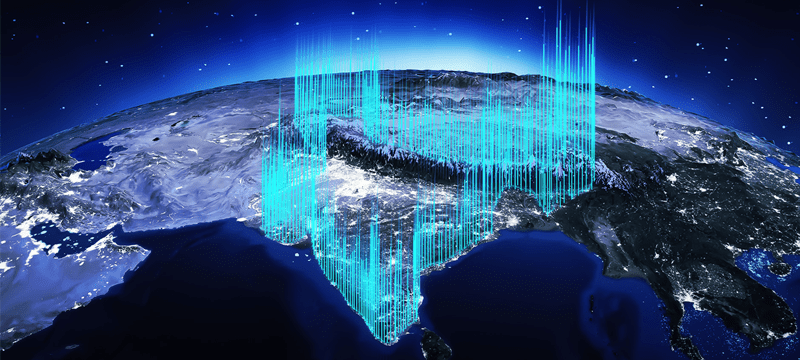Contents
Table of Contents
There is a new saying that data is gold for this generation. The foundation of the digital economy is entirely dependent on data. To organize, manage, store, and process the data, a specialized facility known as a data center is adopted by companies. Data localization, in simple terms, is a compliance process of restricting data flow from one country of origin to another. Today, 75% of all nations have deployed data localization rules at varying levels. These restrictions significantly impact data governance, IT footprints, data architectures, and interactions with local regulators. So, let’s understand what data localization brings with it for data centers.

When is data localization needed?
Some legal laws force companies to have data residency requirements that lead to localizing their data. However, maximum data privacy frameworks may not need data localization. But even if a country’s law doesn’t mandate data localization, highly regulated sectors such as healthcare and banking may deploy best practices that add more requirements for data sharing if it is to be processed in a different country. Companies may choose data localization rather than adhering to these additional requirements in such cases.

How does data localization work?
Data localization is relatively straightforward for companies that operate in a single country or area and utilize on-premise data centers to store and manage data. However, till the data remains secure within the data centers, it must be localized in the required manner.
But cloud computing is a different challenge and makes data localization more complex. Cloud servers are accessed via the internet; hence, data can be placed anywhere in the world. Companies that depend on cloud computing have lesser transparency into where their critical data is processed or stored since the cloud service provider controls these decisions. However, cloud computing can undergo data localization if the cloud provider is committed to storing and processing data in data centers within the specified region.
Benefits of Data Localization
- Accessibility: If data is stored outside the country of origin, access to such data is governed by local laws, and the companies that want to access it will rely on the approval of the host nation’s governments. Data localization gives local authorities the right to provide access to data when needed.
- Prevention of foreign surveillance: It aims to safeguard the financial and personal details of a particular country’s citizens from the surveillance of other foreign nations.
- Privacy & security: It will allow the better execution of privacy rights by the citizens of a country against any type of unauthorized access to data from any foreign body.
- Economic benefits: Rising economic interests have forced governments to deploy rules that limit cross-border data flows that can affect negotiations on global trade & commerce. The economic benefits of data localization will support local industry in terms of building local infrastructure, contributions to the AI ecosystem, and employment.
- Law enforcement benefits: Data localization here will offer leverage to law enforcement agencies, and they can seamlessly gather evidence in case of a cyber threat or a data breach.
Conclusion
As data is becoming the digital fuel that drives almost every company in every sector, securing it becomes paramount for all parties involved. Data localization in data centers will support the creation of legally acceptable restrictions that will ensure data doesn’t crossover to a different country without permission from the local government and other authorities.













